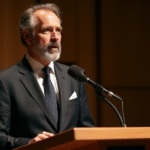Introduction
During a recent press conference, Mexico City’s Mayor Claudia Sheinbaum and her cabinet members presented mixed economic news. The Secretary of Finance, Edgar Amador, claimed that the Gross Domestic Product (GDP) grew by 0.8% in Q1 2025, emphasizing it was “practically double” the analysts’ estimates. However, Amador referred to the interannual figure rather than the actual quarterly growth rate, which, according to the National Institute of Statistics and Geography (Inegi), was a mere 0.2%. This discrepancy highlights the gap between official rhetoric and economic reality.
Economic Context and Current State
Despite the optimistic outlook, recent data calls for caution. While unemployment is at historic lows, exports have reached their highest level in five years, and the trade balance has shown a significant surplus. However, a 0.2% quarterly growth rate confirms that the economy remains virtually stagnant.
Foreign Direct Investment (FDI)
Secretary of Economy, Marcelo Ebrard, announced that FDI reached a record high of $21.4 billion in Q1 2025. However, this growth is more due to companies relocating to Mexico because of global supply chain repositioning rather than structural internal improvements or effective economic policies.
Moreover, not all FDI is equally valuable. 78% of the total came from the reinvestment of corporate profits by established companies, while only 9% represented new investments. New investments are crucial as they create jobs, build factories, transfer technology, and strengthen the industrial fabric. Mexico needs fresh capital, not just recirculated profits, to achieve sustainable growth.
New Regional Development Plan: PODECOBI
To counteract internal weaknesses, the government introduced the Polos de Desarrollo Económico para el Bienestar (PODECOBI) program, offering tax incentives, infrastructure, and simplified administrative processes to attract both domestic and foreign investment. The package includes 100% deductions on fixed assets and 25% on training or R&D.
Historical Context and Challenges
Mexico has a history of failed regional development programs across various administrations. Examples include Peña Nieto’s Special Economic Zones, canceled by López Obrador in 2019; Felipe Calderón’s logistics corridors that never materialized; Vicente Fox’s Plan Puebla-Panamá, which had minimal impact on the south-southeastern development; and Ernesto Zedillo’s multimodal corridors, which were ultimately forgotten.
The question remains: what makes the PODECOBI program different?
Economic Outlook
The economy remains fragile, with insufficient growth despite controlled inflation, fiscal discipline, and investment promotion. If the PODECOBI program successfully drives regional and industrial development, Claudia Sheinbaum could be remembered for accomplishing what her predecessors couldn’t: turning regional development promises into reality.
Key Questions and Answers
- What did Edgar Amador announce regarding the GDP growth? Amador claimed a 0.8% GDP growth in Q1 2025, emphasizing it was “practically double” analysts’ estimates. However, the actual quarterly growth rate, according to Inegi, was only 0.2%.
- What is the current state of Mexico’s economy? While unemployment is low, exports are up, and the trade balance is positive, the overall growth remains insufficient, with a 0.2% quarterly GDP growth rate.
- What is the nature of the recent FDI influx? The high FDI figure is mainly due to companies relocating to Mexico because of global supply chain changes, not structural improvements or effective economic policies.
- What are the details of the PODECOBI program? PODECOBI offers tax incentives, infrastructure, and simplified administrative processes to attract investment. The package includes 100% deductions on fixed assets and 25% on training or R&D.
- Why is there skepticism about the PODECOBI program’s success? Mexico has a history of failed regional development programs, raising doubts about PODECOBI’s potential for success.






